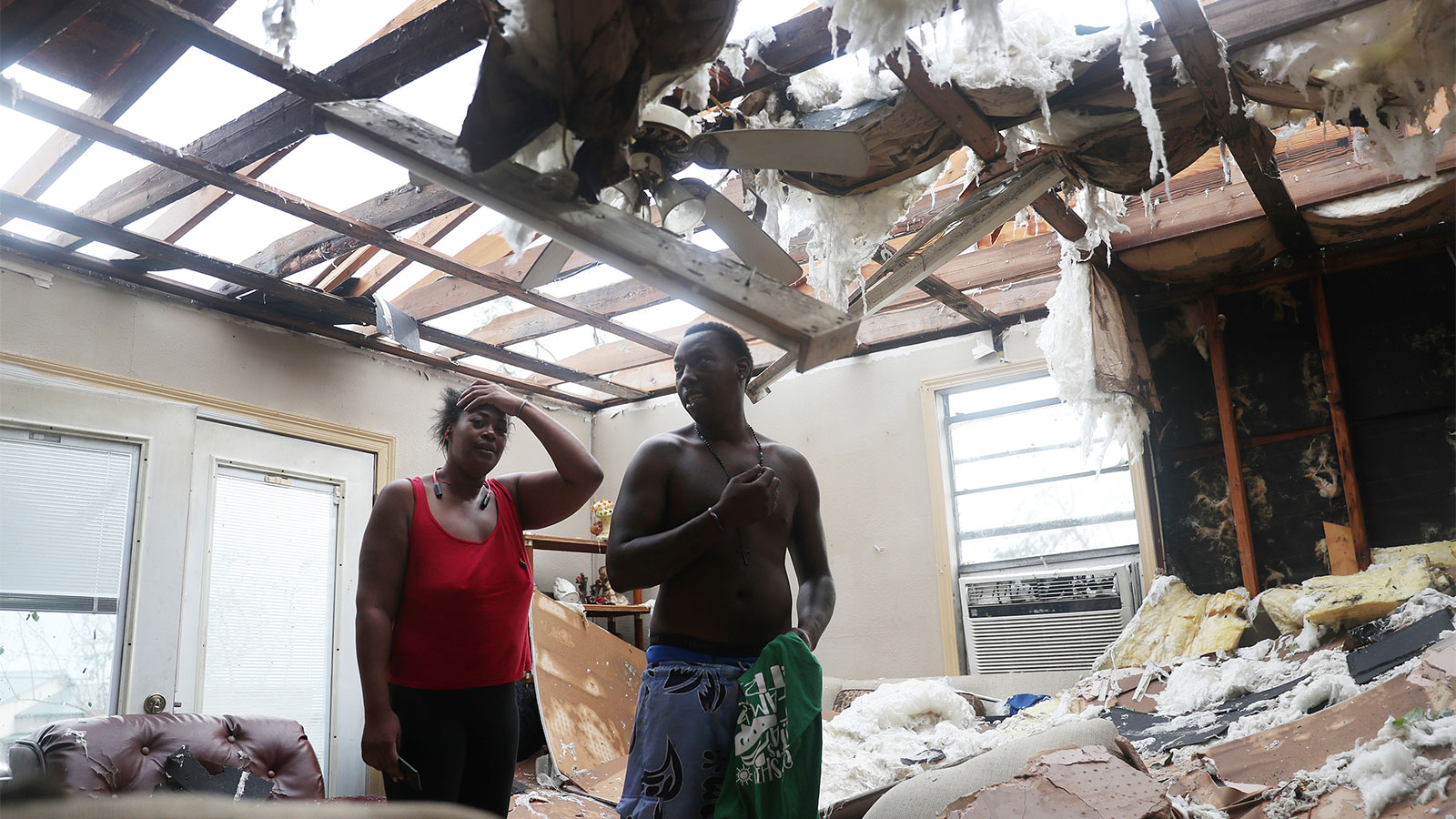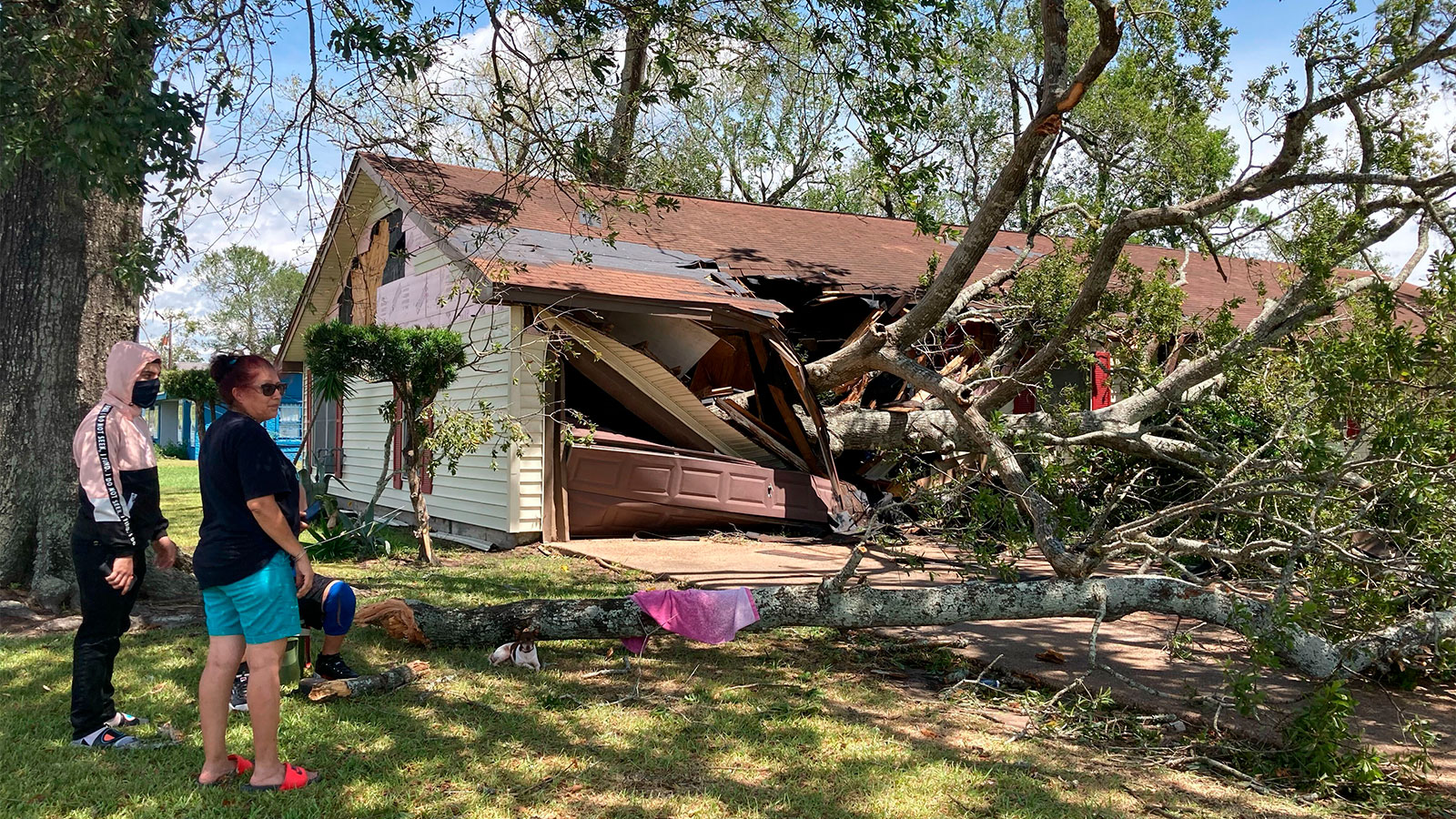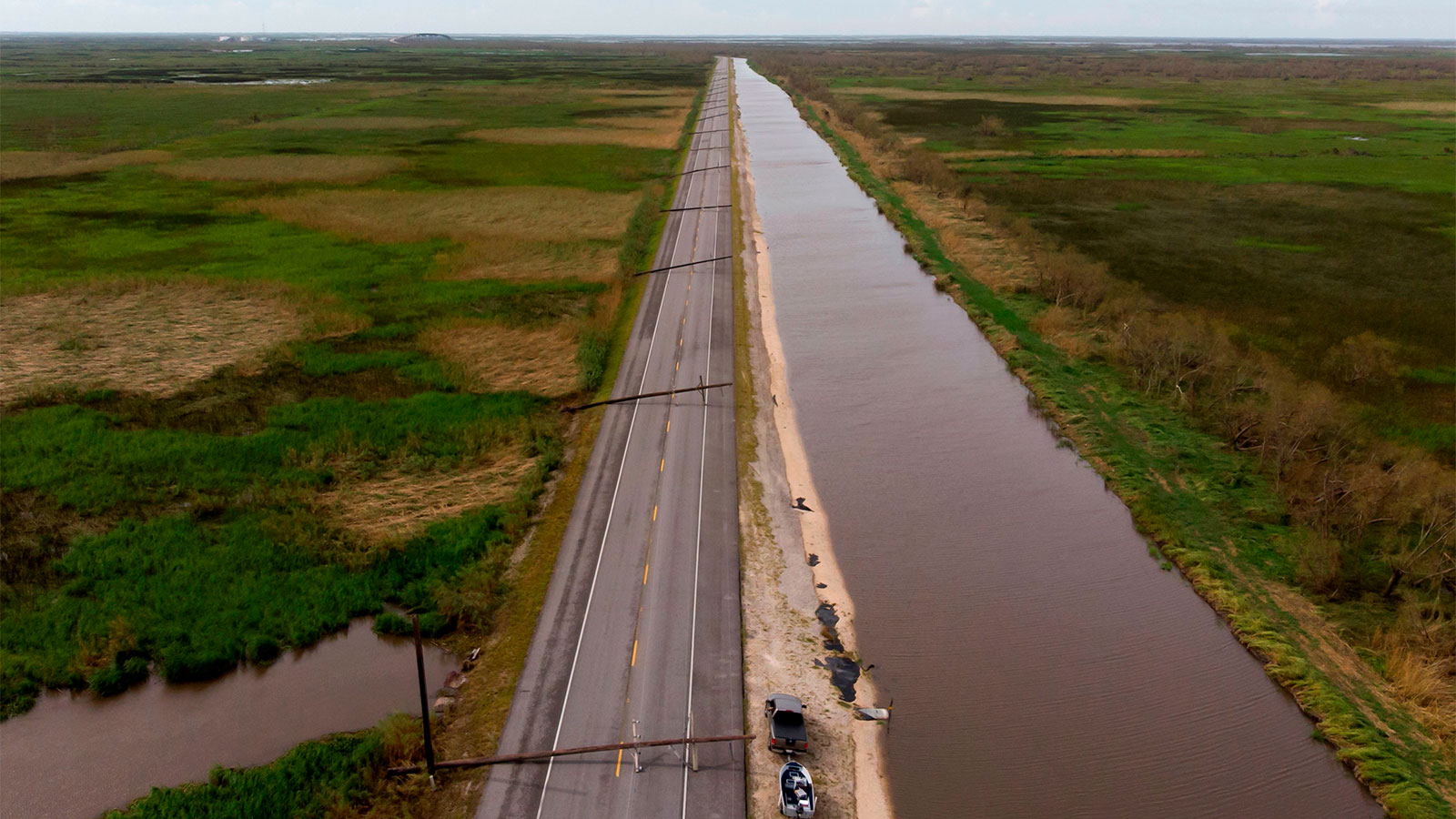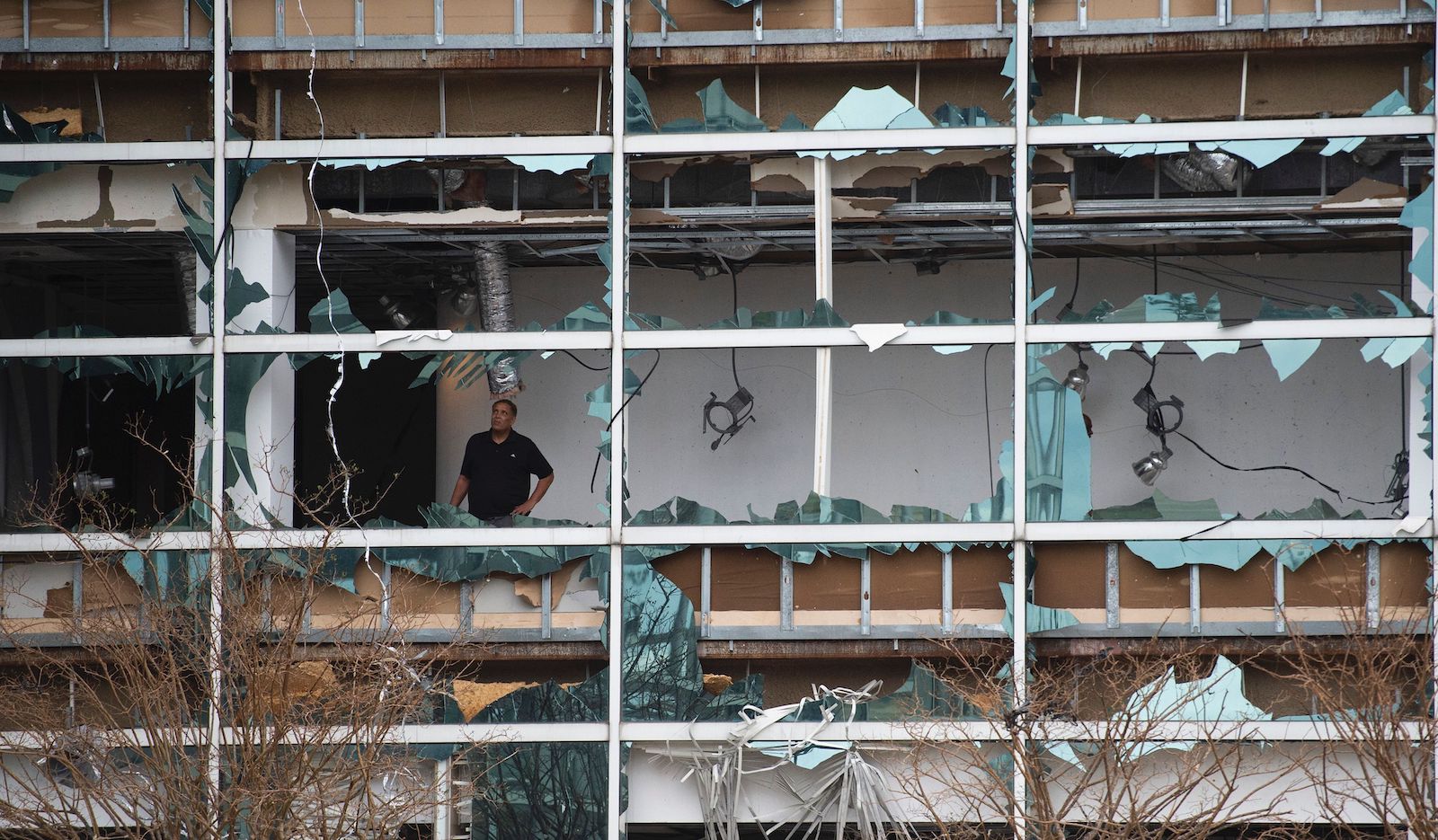Hurricane Laura made landfall near Cameron, Louisiana, last night, bringing destructive 150 mile per hour winds to the area near the Texas border. Laura is one of the strongest storms to hit Louisiana on record, and the damage it brought to Gulf Coast communities is just beginning to come to light.
The city of Lake Charles, Louisiana was evacuated the day before, and residents returned to a terrifying sight: a thick cloud of smoke billowing out of a factory across the lake, the result of a chemical fire at Biolab, a company that produces chlorine for swimming pools. The surrounding area is now under shelter-in-place orders. But with the windows, doors, and roofs of many buildings in the area blown out from the storm, some residents may not have a safe space to shelter in.

A chemical fire burns at BioLab, Inc. during the aftermath of Hurricane Laura Thursday, Aug. 27, 2020, near Lake Charles, Louisiana. AP Photo / David J. Phillip

Latasha Myles and Howard Anderson stand in their living room where they were sitting when the roof blew off around 2:30 a.m. as Hurricane Laura passed through the area on August 27, 2020, in Lake Charles, Louisiana. Joe Raedle / Getty Images
At a briefing, the superintendent of the Louisiana State Police reported that some of the plant’s products began to react and decompose during the storm, which caused the fire. He said that chlorine gas was released into the air. If inhaled, chlorine can cause lung damage. Exposure can also result in headaches and a burning sensation in the eyes, nose, and throat.
The 2020 hurricane season is tearing through the alphabet at ‘LMNOP’ speed
About 60 miles to the southwest, in Port Arthur, Texas, refineries and petrochemical plants are beginning to start up again, a process that will release thousands of pounds of pollution. That’s in addition to the almost 4 million pounds these plants reported they would release in order to shut down. The Motiva refinery, the largest refinery in North America, estimated it would release 130,000 pounds of various chemicals in the shut down process, and another 49,000 pounds to restart. Motiva has also reported the discovery of a leak at the plant, which it said caused additional emissions.

Port Arthur, Texas, oil refineries. Eric Thayer / Getty Images
While Port Arthur was mostly spared from the storm, forecasts suggested the town could have been hit hard, threatening the network of oil refineries on its shores — a karmic and still not unlikely circumstance, considering that the continued burning of oil is fueling climate change, making hurricanes like Laura more frequent and severe. Some petrochemical companies have begun to assess the vulnerability of their Gulf Coast facilities to climate change, and the potential public health risks of that vulnerability. Others, like Exxon and Chevron, have ignored shareholder requests to do so.
Offline Texas refineries in Hurricane Laura’s path will emit millions of pounds of pollution
The true toll of the storm is still being assessed, but those who evacuated were saved from life-threatening winds and storm surge. At least four people have been confirmed dead, all killed by fallen trees.

Maria Ramirez and her son 17-year-old son Jose Avila stand in front of their home in Orange, Texas, Thursday, Aug. 27, 2020. They had evacuated and were not at home when the tree fell. AP Photo / Juan Lozano
Jordan Steel, a meteorologist with the Weather Channel who was camped out in a hotel in Lake Charles, documented the storm tearing the building apart. The winds were stronger than those brought by Hurricane Katrina 15 years ago, and the strongest that Louisiana has seen in more than 150 years.
#Laura so strong!! Pieces of the hotel are coming apart. Look at the glass coming down from above. We’re in the #eyewall now pic.twitter.com/9S4fbnvCS3
— Jordan Steele (@JordanSteele) August 27, 2020
Houses and businesses in Lake Charles Parish were flooded, flattened, or ripped apart. Power lines are down.

Homes flooded near Lake Charles, Louisiana. AP Photo / David J. Phillip

Destroyed mobile homes in Lake Charles, Louisiana. ANDREW CABALLERO-REYNOLDS / AFP via Getty Images

An auto parts store employee surveys the damage on Thursday, Aug. 27, 2020, in Lake Charles, Louisiana. AP Photo / Gerald Herbert

Power lines downed by Hurricane Laura across Highway 27 in Creole, Louisiana. STRINGER/AFP via Getty Image
But like a rainbow after the storm, Hurricane Laura brought some residents of Lake Charles an unexpected gift. Earlier this summer, protestors demanded the city take down a Confederate statue dedicated to “The South’s Defenders,” from the Calcasieu Parish Courthouse lawn. Two weeks ago, the local parish government voted 10 to 5 to keep the statue in place. But Laura had other plans.
[jumbo-content]


[/jumbo-content]




